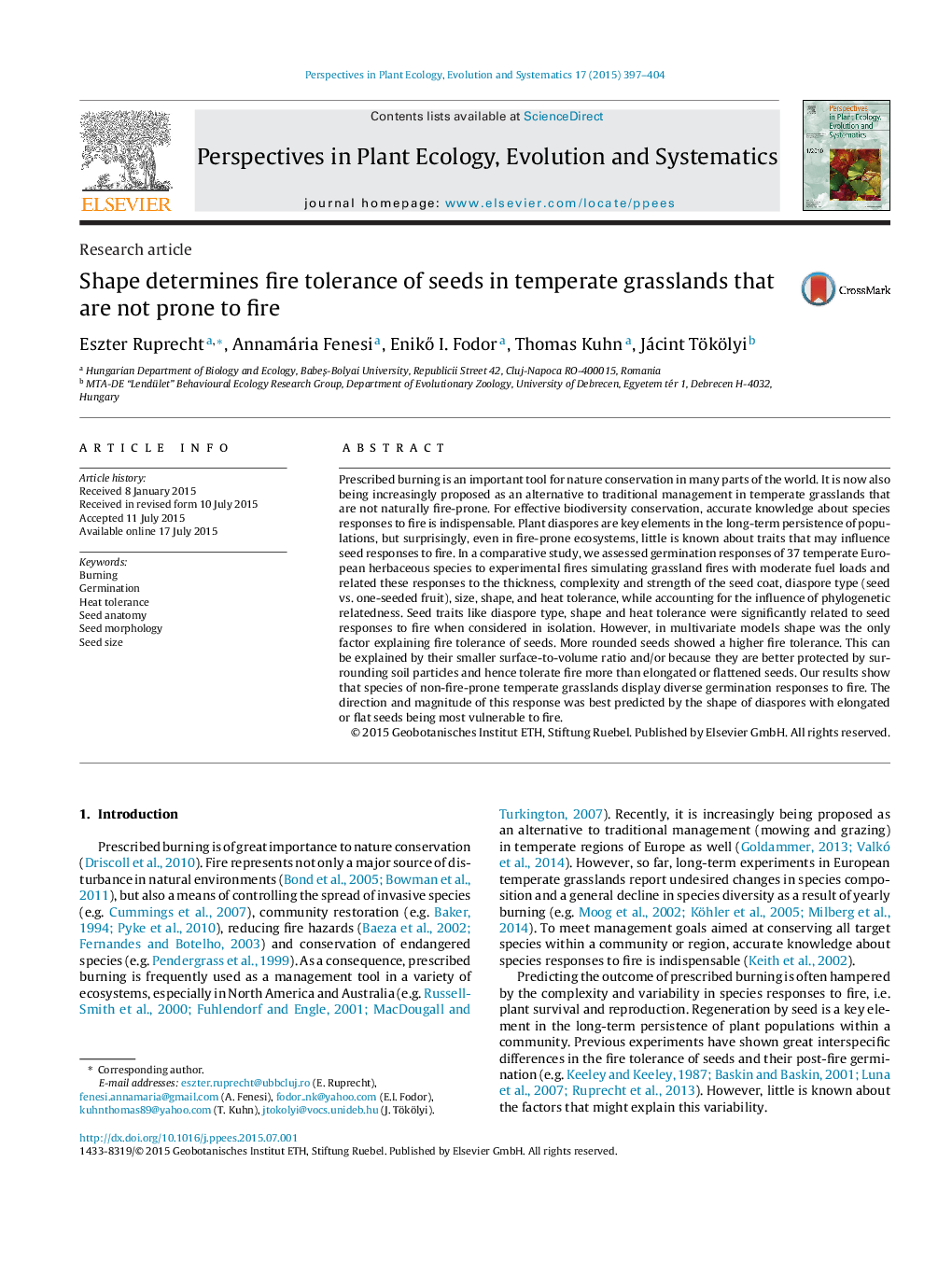| کد مقاله | کد نشریه | سال انتشار | مقاله انگلیسی | نسخه تمام متن |
|---|---|---|---|---|
| 4400925 | 1307032 | 2015 | 8 صفحه PDF | دانلود رایگان |
• We assessed germination responses of 37 herbaceous species to experimental fire.
• We related germination responses to anatomical and morphological seed traits.
• In multivariate models shape was the only factor explaining fire tolerance of seeds.
• Elongated or flattened seeds are the most vulnerable to fire.
Prescribed burning is an important tool for nature conservation in many parts of the world. It is now also being increasingly proposed as an alternative to traditional management in temperate grasslands that are not naturally fire-prone. For effective biodiversity conservation, accurate knowledge about species responses to fire is indispensable. Plant diaspores are key elements in the long-term persistence of populations, but surprisingly, even in fire-prone ecosystems, little is known about traits that may influence seed responses to fire. In a comparative study, we assessed germination responses of 37 temperate European herbaceous species to experimental fires simulating grassland fires with moderate fuel loads and related these responses to the thickness, complexity and strength of the seed coat, diaspore type (seed vs. one-seeded fruit), size, shape, and heat tolerance, while accounting for the influence of phylogenetic relatedness. Seed traits like diaspore type, shape and heat tolerance were significantly related to seed responses to fire when considered in isolation. However, in multivariate models shape was the only factor explaining fire tolerance of seeds. More rounded seeds showed a higher fire tolerance. This can be explained by their smaller surface-to-volume ratio and/or because they are better protected by surrounding soil particles and hence tolerate fire more than elongated or flattened seeds. Our results show that species of non-fire-prone temperate grasslands display diverse germination responses to fire. The direction and magnitude of this response was best predicted by the shape of diaspores with elongated or flat seeds being most vulnerable to fire.
Journal: Perspectives in Plant Ecology, Evolution and Systematics - Volume 17, Issue 5, October 2015, Pages 397–404
